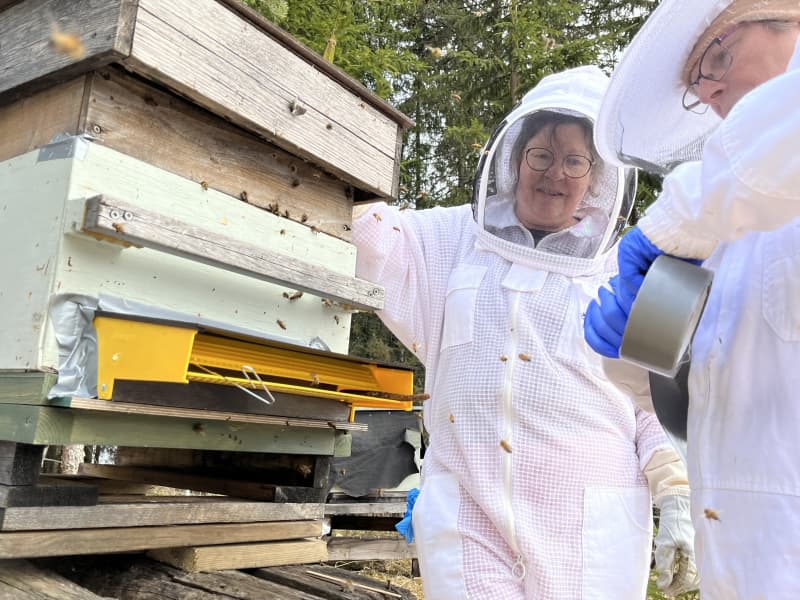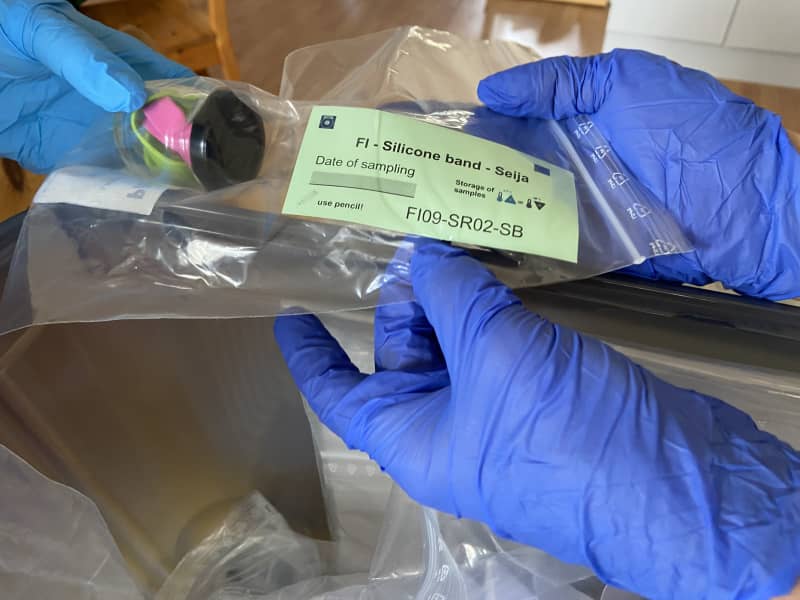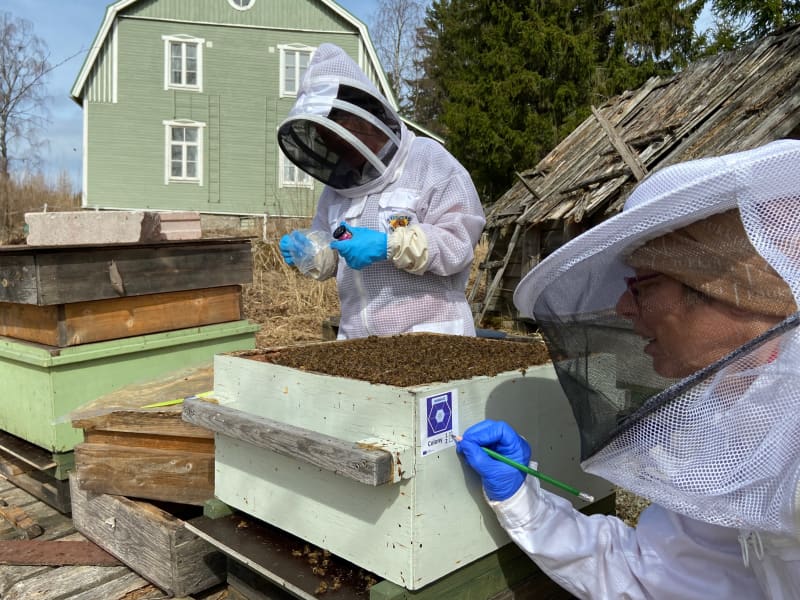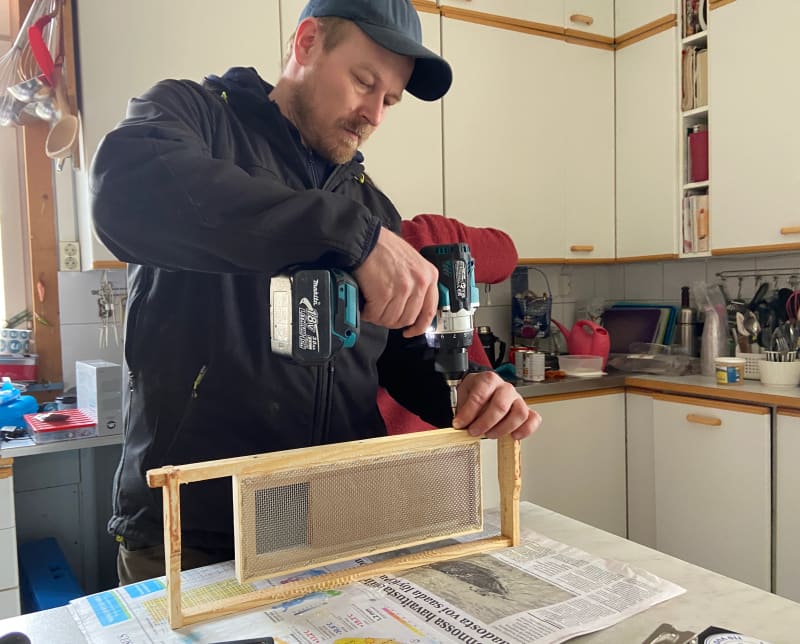Bees mourning in Juupajoki can reveal whether microplastic has already spread to the natural environment. The swarming of honey bees produces unique research material in the summer.
Organic Farm Henkireiä’s shelter bees have an important task this summer: they bring pollen and honey to the hive with samples of air pollution, microplastics, residues of plant protection agents and heavy metals.
The berry farm in Pirkanmaa is involved in a study that reveals the dirtiness of the entire European nature on an unprecedented scale. It is the Insignia-bee study, which includes all EU countries.
Bees are well suited as researchers of the state of the environment, as they sniff out vegetation quite precisely within a radius of two kilometers from the hive.

– It is extremely important to know what state nature is in. That’s why research needs to be done, Halme states.
Scented cosmetics are prohibited when visiting the baths
In the nurseries included in the study, two nests are equipped with measuring instruments. Apart from them, the nest is otherwise a normal nest.
Data collection must be done very carefully. Nitrite gloves must be worn on the hands, and strong-smelling hand creams and cosmetics must not be used, as they can introduce heavy metals into the sample.
Samples taken from several collectors must also be recorded precisely in the correct order.

Seija Halme, who became a citizen researcher, was still on his bike on the day of the installation of the research equipment. He was happy to join the research, even though it means a lot of extra work and headaches.
– Fortunately, I received the instructions on paper and I plan to read them carefully. Yes, this makes everything clear.
You have to visit the research nest every two weeks to pick up samples. The bees themselves are not disturbed by the measuring devices, because they have been developed for many years to be a little non-disturbing.
The collectors of the nests grab a gigantic material
Everything must be done accurately so that the research becomes reliable. The material becomes unique.
– This research provides a huge amount of samples and information, Martikkala says.

A device is installed at the mouth of the hive, which catches some of the pollen carried by the bees. They bring it as food for their larvae, i.e. babies, and as food for the more grown-up young.
The community’s food stocks are not endangered, as five milligram samples are taken from the pollen. During the summer, the colony loads a total of 30 kilograms of pollen into the hive.
Pollen samples go to a laboratory in Portugal, where DNA analysis is done. In this way, it becomes clear throughout Europe which plants the bees visit. Even this has not been precisely known until now.
The measurement data obtained from the nests goes from Finland to many different laboratories around Europe. Different substances are analyzed in different laboratories.
Putty wax reveals heavy metals
Samples are also taken from the hive’s fresh honey, which reveal possible amounts of pesticides. For the same purpose, an extra strip was embedded in the research nests.
Seija Halme and Maritta Martikkala also strung nets over the top of the hive to collect the bees’ propolis or propolis. Accumulations of heavy metals can be determined from that material.

Silicone rings, which collect microplastics from the air inside the nest, also sneaked into the research nests.
– Of course, I would hope that we could find as clean samples as possible. But it could be that microplastics have already reached everywhere, Seija Halme thinks.
Each country includes three types of regions
Bee hives from three different types of environments are included from each EU country in order to obtain a representative sample of the material. Research nests are located either in an urban environment, in a natural forest area or in an intensive farming area.
The study started already in 2018, when a few EU countries were involved. Since then, the European Food Agency EFSA hoped that bees would be harnessed to find out the state of environmental pollution throughout the EU.
The results will be published on the website of the Insignia-EU project. The material is being studied by eleven mainly university-led research institutes in ten different countries.
Research coordinator Maritta Martikkala thinks that the first laboratory results will be available already during next winter. Although the website of the study will be open until 2030, the actual sample collection will continue with the current funding only this summer.
